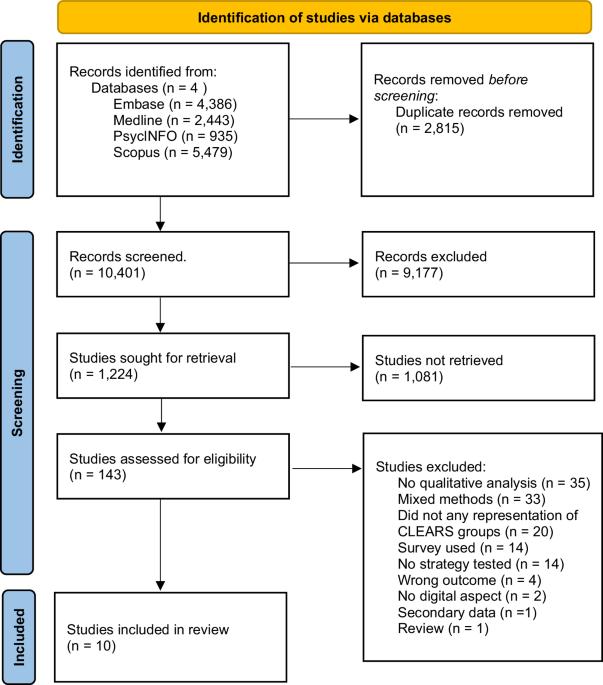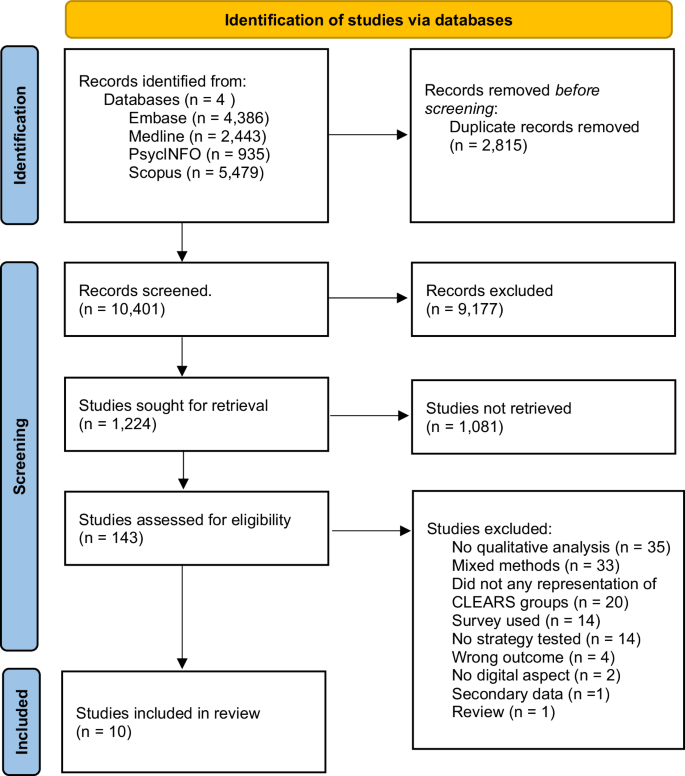Recommendations to advance digital health equity: a systematic review of qualitative studies
IF 12.4
1区 医学
Q1 HEALTH CARE SCIENCES & SERVICES
引用次数: 0
Abstract
The World Health Organisation advocates Digital Health Technologies (DHTs) for advancing population health, yet concerns about inequitable outcomes persist. Differences in access and use of DHTs across different demographic groups can contribute to inequities. Academics and policy makers have acknowledged this issue and called for inclusive digital health strategies. This systematic review synthesizes literature on these strategies and assesses facilitators and barriers to their implementation. We searched four large databases for qualitative studies using terms relevant to digital technology, health inequities, and socio-demographic factors associated with digital exclusion summarised by the CLEARS framework (Culture, Limiting conditions, Education, Age, Residence, Socioeconomic status). Following the PRISMA guidelines, 10,401 articles were screened independently by two reviewers, with ten articles meeting our inclusion criteria. Strategies were grouped into either outreach programmes or co-design approaches. Narrative synthesis of these strategies highlighted three key themes: firstly, using user-friendly designs, which included software and website interfaces that were easy to navigate and compatible with existing devices, culturally appropriate content, and engaging features. Secondly, providing supportive infrastructure to users, which included devices, free connectivity, and non-digital options to help access healthcare. Thirdly, providing educational support from family, friends, or professionals to help individuals develop their digital literacy skills to support the use of DHTs. Recommendations for advancing digital health equity include adopting a collaborative working approach to meet users’ needs, and using effective advertising to raise awareness of the available support. Further research is needed to assess the feasibility and impact of these recommendations in practice.


促进数字健康公平的建议:定性研究的系统回顾
世界卫生组织提倡利用数字健康技术(DHTs)促进人口健康,但人们对不公平结果的担忧依然存在。不同人口群体在获取和使用数字保健技术方面的差异可能会导致不平等。学术界和政策制定者已经认识到这一问题,并呼吁制定包容性的数字健康战略。本系统性综述综合了有关这些策略的文献,并评估了其实施的促进因素和障碍。我们使用与数字技术、健康不平等以及与数字排斥相关的社会人口因素(由 CLEARS 框架(文化、限制性条件、教育、年龄、居住地、社会经济地位)总结)相关的术语搜索了四个大型数据库中的定性研究。按照 PRISMA 指南,两名审稿人独立筛选了 10,401 篇文章,其中有 10 篇符合我们的纳入标准。这些策略被归类为推广计划或共同设计方法。对这些策略的叙述性综述强调了三个关键主题:首先,使用用户友好型设计,包括易于浏览并与现有设备兼容的软件和网站界面、适合不同文化的内容以及吸引人的功能。第二,为用户提供支持性基础设施,包括设备、免费连接和非数字选项,以帮助用户获得医疗保健服务。第三,由家人、朋友或专业人士提供教育支持,帮助个人发展数字扫盲技能,以支持使用数字图谱技术。促进数字医疗公平的建议包括:采用合作的工作方式来满足用户的需求,并利用有效的广告宣传来提高人们对可用支持的认识。要评估这些建议在实践中的可行性和影响,还需要进一步的研究。
本文章由计算机程序翻译,如有差异,请以英文原文为准。
求助全文
约1分钟内获得全文
求助全文
来源期刊

NPJ Digital Medicine
Multiple-
CiteScore
25.10
自引率
3.30%
发文量
170
审稿时长
15 weeks
期刊介绍:
npj Digital Medicine is an online open-access journal that focuses on publishing peer-reviewed research in the field of digital medicine. The journal covers various aspects of digital medicine, including the application and implementation of digital and mobile technologies in clinical settings, virtual healthcare, and the use of artificial intelligence and informatics.
The primary goal of the journal is to support innovation and the advancement of healthcare through the integration of new digital and mobile technologies. When determining if a manuscript is suitable for publication, the journal considers four important criteria: novelty, clinical relevance, scientific rigor, and digital innovation.
 求助内容:
求助内容: 应助结果提醒方式:
应助结果提醒方式:


